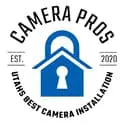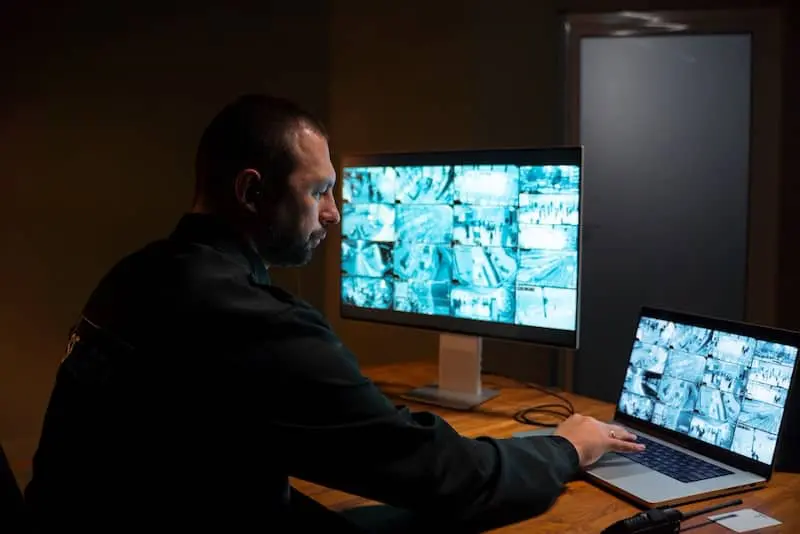Managing security across multiple business locations presents unique challenges. Whether you oversee a chain of retail stores, a multi-site corporate office, or a network of warehouses, you know how critical seamless security monitoring is to protect your assets. Relying on independent camera systems at each site can create security blind spots and add to your costs. A centralized camera system installation for multiple buildings offers an integrated approach that improves surveillance, simplifies management, and enhances response times.
With a commercial CCTV installation, you can monitor multiple locations from a single platform, giving security teams access to real-time footage and alerts across all sites. This approach eliminates the need to switch between different systems, allowing for faster threat detection, streamlined operations, and better resource allocation. In this guide, we will explore the advantages of centralized security monitoring, the key features businesses should look for, and how an expert installation service ensures maximum efficiency.
Table of Contents
ToggleThe Challenges of Multi-Location Security Monitoring
If you run a business with multiple locations, keeping track of security can get overwhelming. When each site has its own system, you have to log into different platforms, check multiple camera feeds, and manually handle any issues. This takes up a lot of time and increases the chance of missing something important. It can also lead to slower responses, higher costs, and a lack of consistency in your security strategy.
On top of that, separate systems often mean inconsistent video quality, software that doesn’t work well together, and gaps in coverage. Without a unified system, it’s harder to pull footage, analyze data, or add new security features. Over time, these problems can leave your business vulnerable to theft, vandalism, and unauthorized access.
By switching to a centralized security camera system, you can simplify monitoring and create a stronger, more efficient security network across all your locations.
Benefits of a Centralized Camera System
Unified Surveillance and Real-Time Monitoring
With a centralized camera system, you can easily monitor multiple locations from one platform. Instead of juggling multiple logins and switching between different systems, you get access to real-time video feeds from all your sites in one place. This saves time and ensures that you can quickly spot and respond to security threats.
Modern cloud-based systems let you view live and recorded footage from any device, whether you’re on-site or offsite. Your security team can check cameras at all locations in seconds, making it easier to catch suspicious activity, verify alarms, and respond to emergencies quickly.
Cost-Effective Security Management
Operating independent security systems across multiple sites can be costly. Each location requires its own hardware, software, maintenance, and security staff to monitor footage effectively. A centralized approach eliminates unnecessary redundancies and helps businesses save on operational costs.
With a centralized camera system, you reduce the need for multiple monitoring teams, consolidate hardware and software, and minimize maintenance expenses. Many modern solutions also allow you to add more cameras and locations as your business grows—without the need for a complete system overhaul. For expanding businesses, this approach is both smart and cost-effective.
Key Features to Look for in a Centralized Security Camera System
When choosing a centralized security system, it’s important to look for key features that enhance security and simplify management:
- Remote Access and Control – View and manage footage from anywhere using a secure web portal or mobile app.
- Scalability – Add more cameras and locations as your business expands.
- High-Definition Video Quality – Capture clear footage with sharp details like facial features and license plates.
- AI-Driven Analytics – Use motion detection, facial recognition, and automated alerts to improve threat detection.
- Integration with Access Control Systems – Sync with door entry systems, alarms, and other security solutions.
- User Permissions and Role-Based Access – Control who can view and manage specific cameras or footage.
A professional camera system installation service will configure and optimize these features for your business needs.
Why Professional Camera Installation Matters
While installing cameras yourself may seem like a great way to save money, a professional security camera installation service offers significant advantages. Security experts assess each location’s unique layout and vulnerabilities to determine the best camera placements, wiring setups, and network connections. This provides complete coverage of all high-risk areas and minimizes blind spots. A professional installer will also ensure that camera installations meet all legal requirements for your area.
Professionals also handle software configuration, data encryption, and network security to protect your system from cyber threats. Plus, they provide ongoing maintenance and support to ensure your cameras stay up-to-date and function properly. Without expert installation, you risk poor camera positioning, connectivity issues, and gaps in security that could leave your business exposed.
Without professional installation, businesses may end up with poorly positioned cameras that miss critical areas, connectivity problems, compatibility issues, and inadequate security measures that expose them to cyber threats.
Investing in professional installation guarantees long-term reliability, enhanced security, and ongoing support.
Final Thoughts
For multi-location businesses, security camera monitoring must be efficient, scalable, and seamlessly integrated across all sites. A well-installed, interconnected CCTV system installation for businesses in Utah gives you real-time surveillance, cost savings, and advanced security features that traditional systems lack. With AI-driven analytics and remote accessibility, you can easily monitor their entire network of locations.
Choosing a trusted camera system installation service gives your business the benefits of professional setup, long-term reliability, and cutting-edge security solutions. Investing in a centralized surveillance system doesn’t just protect individual locations—it creates a connected, intelligent security network that safeguards your entire business.
FAQs
1. What are the benefits of a centralized camera system for multi-location businesses?
A centralized camera system allows businesses to monitor multiple locations from a single interface, giving you real-time surveillance, improved efficiency, and faster incident response. It reduces the need for multiple monitoring teams, lowers hardware and software costs, and streamlines security management.
2. How does a centralized security system improve operational efficiency?
By integrating all cameras into a unified platform, security personnel no longer need to log into separate systems or manually switch between feeds. It improves response times by allowing teams to identify threats quickly and coordinate an appropriate response. Furthermore, automated alerts and AI-driven analytics help security teams focus on real threats rather than manually reviewing hours of footage.
3. Can a centralized camera system be customized for different types of businesses?
Yes, centralized security camera systems are highly customizable based on the specific needs of different industries. Retail businesses may prioritize high-resolution video for theft prevention, while warehouses may need wide-area surveillance with motion detection. A professional camera system installation service can tailor the system to ensure complete coverage and integration with other security tools.
4. Can a centralized system integrate with other security solutions, such as alarms and access control?
Yes, a centralized camera system can integrate with alarms, access control systems, and smart security tools to create a comprehensive security network. For example, linking security cameras to door access systems allows managers to review footage of individuals entering restricted areas. This unauthorized access can also trigger automated alerts, improving overall security response.
5. How scalable is a centralized security camera system as a business expands?
A centralized system is designed for easy scalability, allowing businesses to add more cameras and locations as they grow. Professional installation services can correctly integrate new locations into the existing network without disruptions.
6. What should businesses consider when choosing a camera system installation service?
Businesses should look for experienced providers with expertise in multi-location security solutions. A reliable installer should assess security vulnerabilities, offer customized solutions, and provide ongoing maintenance and support. Check customer reviews, verify industry certifications, and request a detailed project scope to verify the installation service will meet your security needs.
7. How can businesses transition from a decentralized security system to a centralized one?
Transitioning to a centralized system involves assessing current security infrastructure, identifying integration opportunities, and upgrading necessary equipment. A professional camera system installation service can streamline the process by recommending compatible hardware, configuring software, and ensuring seamless data migration. Proper training and support will also help security teams adapt to the new system effectively.

